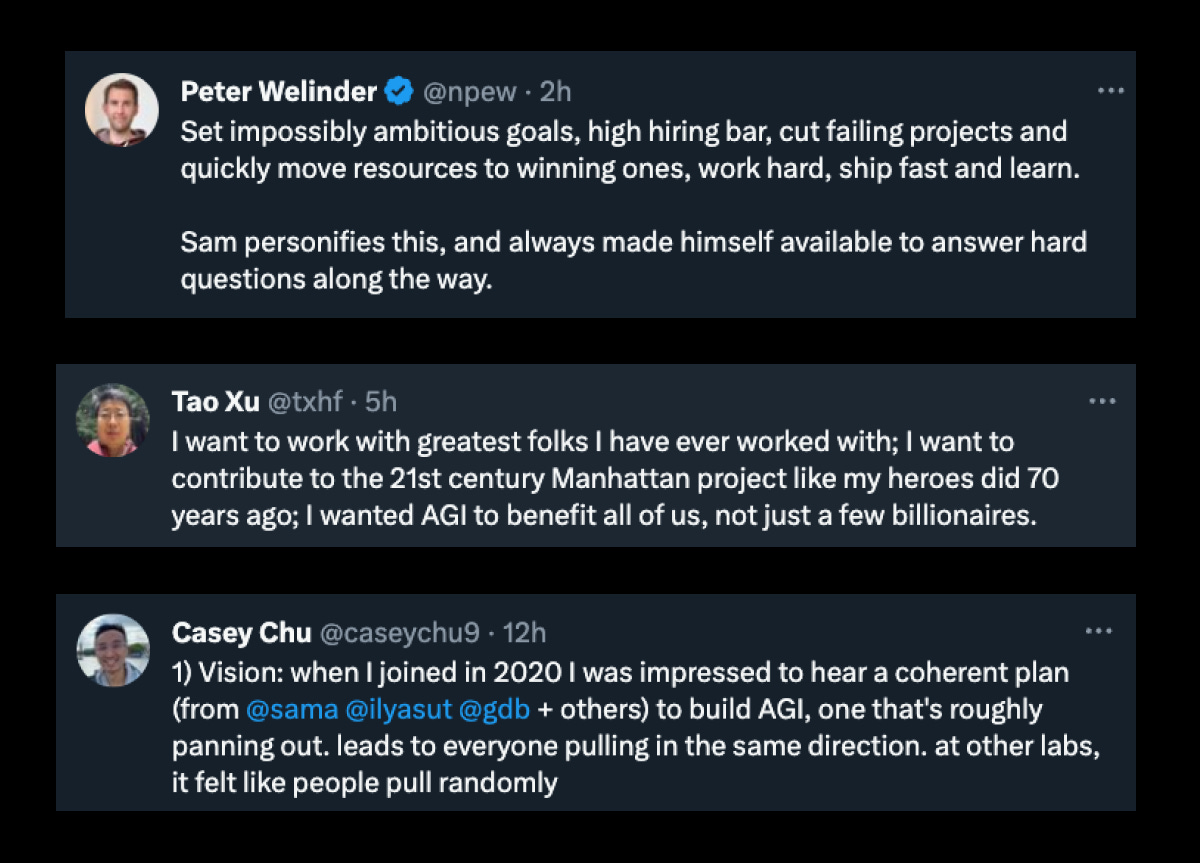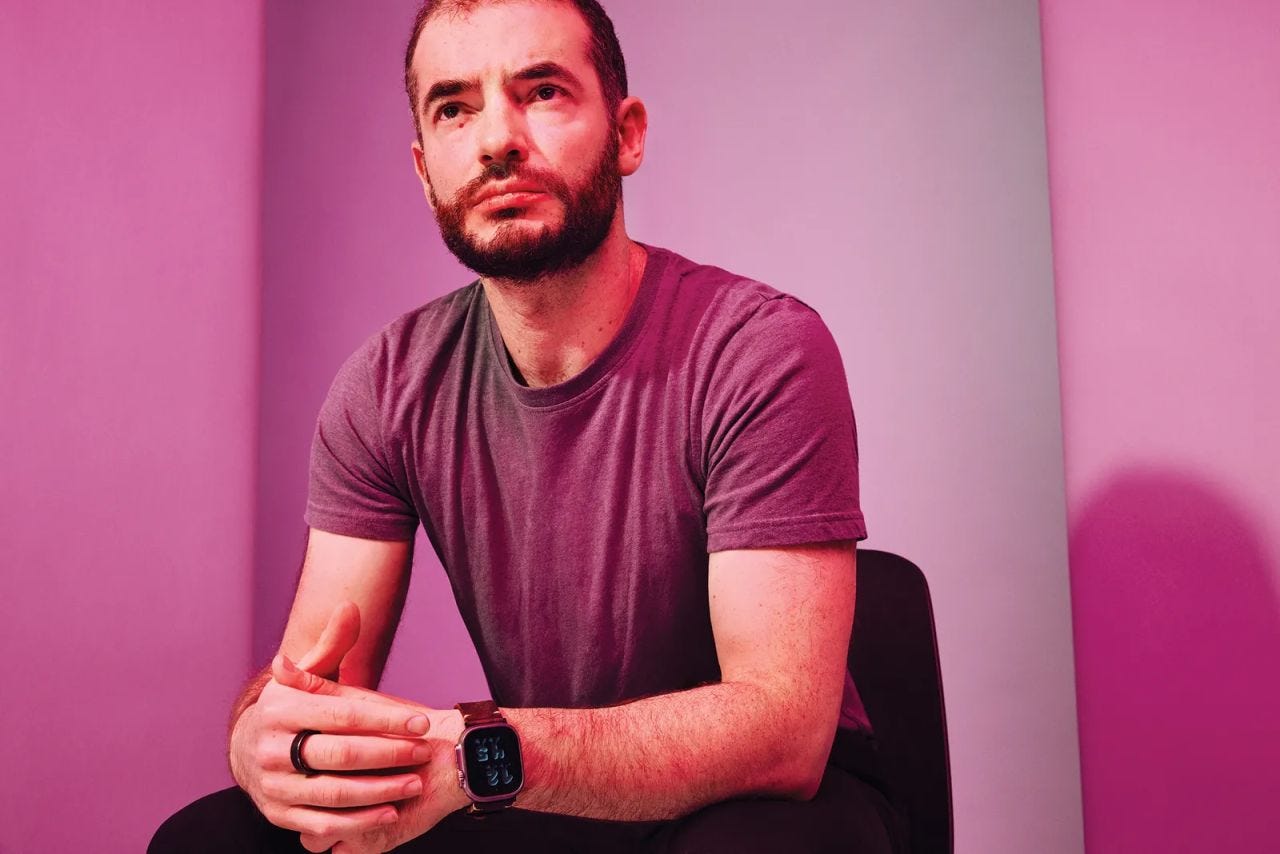OpenAI: A Look At Its Unique Culture that Helped It Survive A Crisis
How OpenAI built a culture where team members ship rapidly and stick together
Dear subscribers,
It’s been a rollercoaster ride for the world’s most important AI company.
You probably know the story by now. On Friday, OpenAI’s board fired CEO Sam Altman. 700+ employees then signed a letter to quit to join Sam at Microsoft if the board doesn’t resign. Finally, last night, OpenAI announced that Sam was coming back as CEO with a new board.
To me, the most interesting part of this story is:
How did OpenAI build a culture that not only delivered GPT4 and ChatGPT but also made every staff willing to follow Sam out the door?
I posted the same question on Twitter/X and got 300 replies. Here’s my take on:
What happened at OpenAI and why
What stands out about OpenAI’s culture
What I think will happen next
What happened at OpenAI and why
So what happened?
Here’s a recap of the events over the last 5 days:
Friday
12 PM: The board fires Sam Altman and announces the news shortly after.
4 PM: Greg Brockman (OpenAI president) quits in protest.
Saturday
9 PM: Sam posts “I love the OpenAI team so much” that employees all retweet.
Sunday
1 PM: Sam posts that he’s back to negotiate with the board along with Satya (Microsoft) and other OpenAI investors and staff.
9 PM: Ilya (chief scientist) tells staff that Sam won’t return as CEO. Instead, Emmett (ex-CEO of Twitch) will become interim CEO.
11 PM: Satya posts that Sam and Greg plan to lead Microsoft’s new AI group.
Monday
2 AM: Hundreds of OpenAI employees post: “OpenAI is nothing without its people” and almost all of them sign a letter telling OpenAI’s board to resign.
5 AM: Ilya posts that he deeply regrets his actions and also signs the letter.
Tuesday
10 PM: OpenAI posts that Sam is returning as CEO with a new board consisting of Bret Taylor, Larry Summers, and Adam D’Angelo.
Why did this happen?
Here’s what we know about 3 out of the 4 people on the OpenAI board that fired Sam:
Ilya Sutskever (chief scientist) was concerned that OpenAI was commercializing too quickly. A recent breakthrough that Sam shared at APEC likely made Ilya more uneasy. On Monday however, Ilya had a change of heart:
Adam D’Angelo (Quora CEO) launched a competing AI bot marketplace (Poe) on 10/25. Shortly after on 11/6, Sam launched custom GPTs. It’s unclear whether Adam knew about Sam’s plans.
Helen Toner (Georgetown) had a dispute with Sam about a paper that she wrote that criticized OpenAI’s safety efforts (source).
Whatever the board’s reasons are, they never produced a smoking gun or specific examples of why Sam needed to be fired.
Now that the drama is over, I think it’s much more interesting to look at…
What stands out about OpenAI’s culture

Let’s go back to our original question:
How did OpenAI build a culture that not only delivered GPT4 and ChatGPT but also made every staff willing to follow Sam out the door?
One argument is that employees simply wanted to protect their bags. After all, Microsoft’s CTO has promised to hire all OpenAI employees and match their compensation.
But I think there’s more here than just money. From employee replies to my post, a recent interview by Gergely, and my research, here are 6 things that stand out about OpenAI’s culture:
1. Humility
“There’s a level of humility across the board.” — OpenAI Blind
Almost everyone at OpenAI has the title: “Member of the technical staff,” including people who held director or above titles at other top tech companies. Giving everyone the same title keeps employees focused on the mission instead of on chasing titles.
2. Researchers build product
“Engineers and researchers are valued equally.”
Product teams at most companies consist of “EPD” (engineering, product, design). At OpenAI, each team is a “DERP” unit — Design, Engineering, Research, and Product.
Instead of sitting in their ivory tower, researchers sit with the product team to improve the model and build prototypes. Features like browsing, code interpreter, and more all started as research prototypes (source).
3. Small integrated teams
“I can’t believe how much gets done with so few people.”
Each new project at OpenAI is structured like a startup that’s iterating toward product market fit. Here’s how the ChatGPT team got started:







